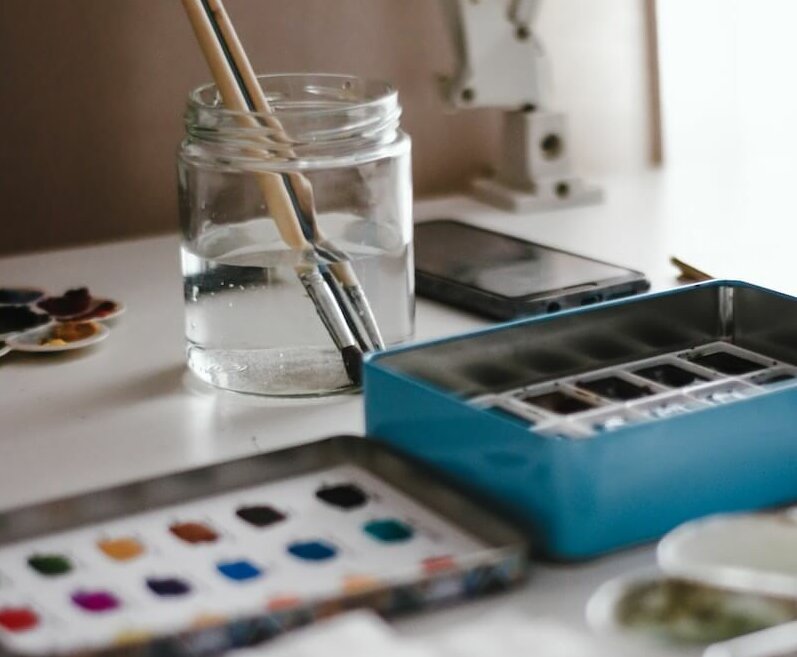In this article, we’ll explore the 7 watercolor essentials that every painter should have in their toolkit to create stunning works of art. Whether you’re a beginner or a seasoned artist, these tips and tools will help you achieve success in your watercolor paintings.

1. Watercolor Paper (High-Quality)
The foundation of any good watercolor painting is high-quality watercolor paper. Watercolor paper is different from other types of paper because it is specially designed to absorb and hold water. The weight, texture, and quality of the paper will affect how the paint interacts with it.
When choosing watercolor paper, consider the weight, texture, and quality. A heavier weight paper will hold up better to the water and allow for more layering, while a lighter weight paper will be more delicate and translucent. The texture of the paper can range from smooth to rough, and the quality will determine how well the paper will hold up over time.
2. Watercolor Paints
The type and quality of watercolor paints you use can make a significant difference in the quality of your paintings. There are two main types of watercolor paints: student-grade and artist-grade.
Student-grade watercolor paints are less expensive and are usually made with more fillers and less pigment, which can result in less vibrant colors and less ability to mix colors. Artist-grade watercolor paints, on the other hand, are made with higher-quality pigments and fewer fillers, resulting in more vibrant colors and the ability to mix colors more easily. These also come in paint tubes as well as the more classical solid watercolor pans.
3. Brushes
Watercolor brushes come in a variety of shapes and sizes, each designed for specific purposes. The three main types of brushes are round, flat, and filbert.
Round brushes are great for creating fine lines, while flat brushes are ideal for washes and larger areas. Filbert brushes have a rounded edge and can be used for both fine lines and washes. When choosing brushes, look for high-quality brushes made with natural or synthetic fibers.
4. Palette
A palette is used to hold and mix your watercolor paints. There are many types of palettes available, from plastic to ceramic to glass.
A good palette should be large enough to hold all of your colors and have enough space for mixing. Look for a palette with a lid to keep your paints fresh and prevent them from drying out.
5. Masking Fluid
Masking fluid is a liquid latex material that is used to mask off areas of your painting that you want to keep white or free of paint. It is applied to the paper before painting and then removed once the painting is complete.
Masking fluid comes in a variety of colors, but the most common is white. It is important to use masking fluid sparingly and to let it dry completely before painting over it.
6. Watercolor Medium
A watercolor medium is used to enhance or alter the properties of watercolor paints. Some mediums can be used to make the paint more transparent or opaque, while others can be used to create different textures and effects.
Some popular watercolor mediums include gum arabic, which can be used to make the paint more transparent and glossy, and salt, which can be sprinkled onto wet paint to create a crystalline effect.
7. Incorporating Texture
One way to add interest to your watercolor paintings is to incorporate texture. You can create texture by using a variety of techniques, such as salt, sponging, or using a dry brush.
For example, you can sprinkle salt onto wet paint to create a crystalline effect, or you can use a dry brush to create a rough, textured look. Experiment with different techniques to see what works best for your painting.
FAQ
What is the difference between student-grade and artist-grade watercolor paints?
Student-grade watercolor paints are less expensive and are usually made with more fillers and less pigment, resulting in less vibrant colors and less ability to mix colors. Artist-grade watercolor paints are made with higher-quality pigments and fewer fillers, resulting in more vibrant colors and the ability to mix colors more easily.
What type of brush is best for watercolor painting?
Watercolor brushes come in a variety of shapes and sizes, each designed for specific purposes. The three main types of brushes are round, flat, and filbert. When choosing brushes, look for high-quality brushes made with natural or synthetic fibers.
What is masking fluid used for in watercolor painting?
Masking fluid is a liquid latex material that is used to mask off areas of your painting that you want to keep white or free of paint. It is applied to the paper before painting and then removed once the painting is complete.
How can I add texture to my watercolor paintings?
You can add texture to your watercolor paintings by using a variety of techniques, such as salt, sponging, or using a dry brush. Experiment with different techniques to see what works best for your painting.
What is THE most important tool for watercolor painting?
The most important tool for watercolor painting is high-quality watercolor paper. The weight, texture, and quality of the paper will affect how the paint interacts with it, so it’s important to invest in good paper.
